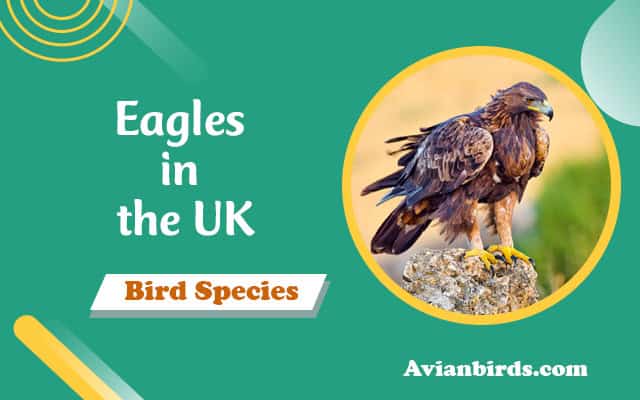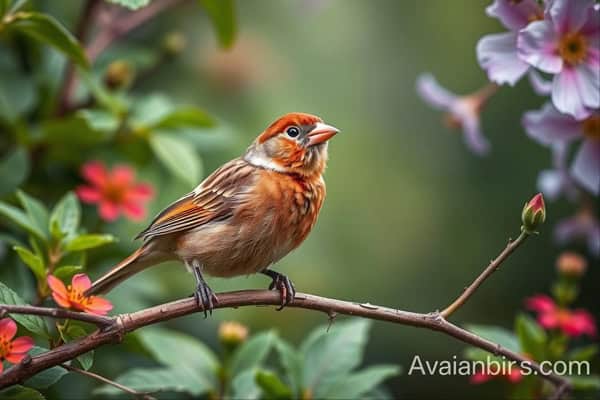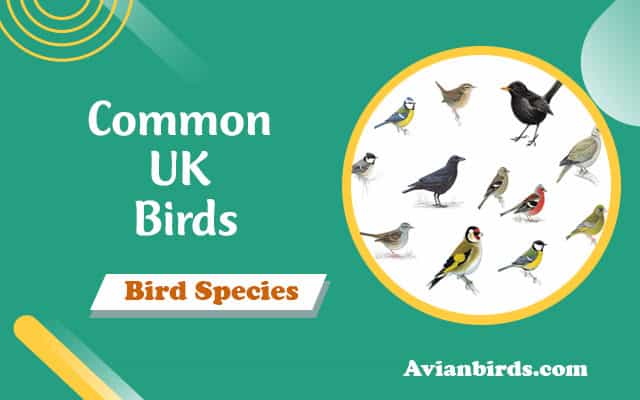9 Birds With Red Heads in the UK (With Pictures)
Birds with red heads aren’t common in the UK, but a few striking species can be found. I’ll cover nine amazing birds in this article, including the Black Grouse, Goldfinch, and Pheasant. Some, like the Black Grouse and Lesser Redpoll, are sadly in decline. Each bird has unique traits, from the acrobatic Swallow to the bold Pheasant. Discover their beauty and learn more about these rare sightings.
Birds With Red Heads in the UK
- Black Grouse
- Swallow
- Pheasant
- Goldfinch
- European Green Woodpecker
- Great Spotted Woodpecker
- Lesser Spotted Woodpecker
- Lesser Redpoll
- 9Common Redpoll
1. Black Grouse
- Scientific Name: Lyrurus tetrix
- Size: 40-58 cm
- Weight: 750-1,300 g
- Lifespan: 5-7 years
- Diet: Seeds, berries, buds, leaves, insects
Only the male Black Grouse have a partially red head. Their bodies are covered in shiny black feathers that reflect blue or green in the light. They also have a beautiful, lyre-shaped tail, which they spread out during mating displays. These displays are important because females choose their mates based on how they look and who can sing the loudest.
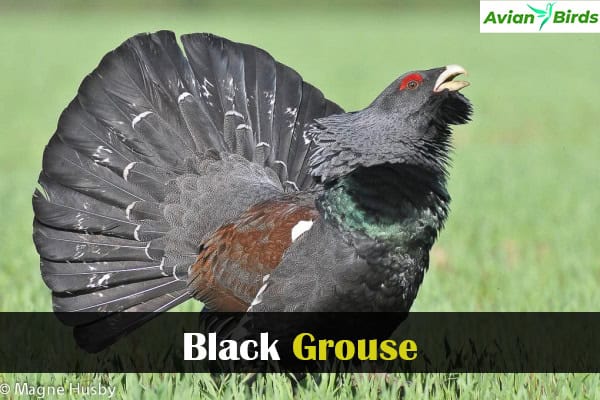
One striking feature of the males is the bright red wattles above their eyes.
The females look different. They are smaller, with brown and grey feathers that are speckled with patterns to help them blend into their surroundings. Unlike the males, the females have slightly notched tails.
In the past, Black Grouse were much more common in the UK’s moorlands and heaths. However, human activity has destroyed many of their natural habitats, making it harder for them to breed.
2. Swallow
- Scientific Name: Hirundo rustica
- Size: 15-20 cm
- Weight: 16-25 g
- Lifespan: 4-8 years
- Diet: Insects (flies, beetles, and other flying insects)
Swallows are birds that only stay in the UK for part of the year. They usually arrive in the spring and leave when autumn comes. When the weather gets colder, they fly to Africa to stay warm.
Swallows like to gather in groups and build their nests in places like barns, under the edges of roofs, and other spots that are easy to reach.

Swallows are really fast – and they need to be! After their babies hatch, the parent birds spend all day flying around to catch food for them.
Even though swallows have red foreheads and throats, you might not notice because they fly so quickly. What you’re more likely to see is their sleek, shiny bodies. They have a glossy blue-black back and white underparts. Plus, their tails are shaped like a fork, which makes them easy to recognize.
3. Pheasant
- Scientific Name: Phasianus colchicus
- Size: 60-90 cm
- Weight: 0.5-1.4 kg
- Lifespan: 1-6 years
- Diet: Seeds, grains, insects, fruits
Like the Black Grouse, male and female pheasants look very different from each other. The females are brown with a speckled pattern, which helps them hide because their colours blend in with their surroundings.
The males, however, have bright, eye-catching feathers. Their colours include rich chestnut and golden-brown with black markings on their bodies and tails. Their heads are dark green with red patches of skin on their faces, called wattles. They also have strong feet with sharp spurs.

Pheasant
Pheasants aren’t native to the UK. They were brought here to be hunted by people who see it as a “sport.” There are many pheasants now, but the only reason we see so many is because they are bred on hunting grounds and released into the wild – just to be hunted.
Some pheasants manage to escape each hunting season, which is why you can find them living and breeding in the wild today.
4. Goldfinch
- Scientific Name: Carduelis carduelis
- Size: 12-13 cm
- Weight: 14-19 grams
- Lifespan: 2-5 years
- Diet: Seeds, small insects
Goldfinches are common in the UK, and it’s the males that have a red head. While females look similar, they don’t have the same red coloring on their faces. Male goldfinches have a bright red face with a black cap and black around their eyes.

Both male and female goldfinches share some features. They have short, strong beaks that are great for getting seeds out of plants. Their breasts are light brown-grey, and their black wings have striking yellow patches.
Goldfinch
Unlike some other birds in the UK, the number of goldfinches has recently grown. This is because they aren’t shy and like to eat food from bird feeders that people put out in their gardens.
5. European Green Woodpecker
- Scientific Name: Picus viridis
- Size: 30-36 cm
- Weight: 180-220 grams
- Lifespan: 7-10 years
- Diet: Ants, insects, larvae, and some fruit
The UK has three types of woodpecker, and the European Green Woodpecker is the largest. It’s easy to recognize because of its bright colours and unique call.
Male European Green Woodpeckers have bright green feathers on their backs, pale yellow-green on their bellies, a yellow rump, and a red crown and back of the head. The black “mustache” with a red center on their face makes the males different from the females.
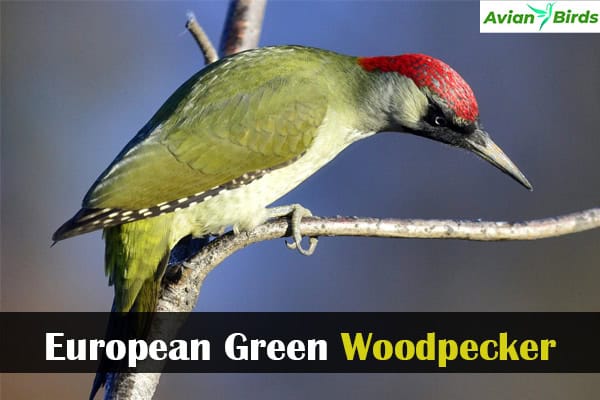
While this bird is not currently endangered, habitat loss and changes in farming could put it at risk in the future. Unlike other woodpeckers, the European Green Woodpecker spends most of its time on the ground, eating ants. If you ever see one, you’ll notice its funny, shuffling walk as it searches for food.
6. Great Spotted Woodpecker
- Scientific Name: Dendrocopos major
- Size: 20-24 cm
- Weight: 70-98 grams
- Lifespan: 5-11 years
- Diet: Insects, larvae, nuts, seeds, and tree sap
The Great Spotted Woodpecker is slightly smaller than the European Green Woodpecker but looks slightly different. The males have black and white checkered feathers on their backs, with white underparts and bold black spots.
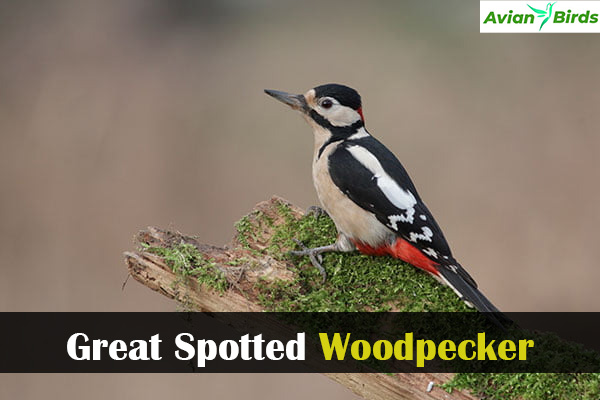
One key difference between males and females is that males have a crimson patch on the back of their heads, while females have black caps. Both males and females have red feathers under their tails.
These woodpeckers are famous for their loud drumming on trees. While other woodpeckers drum too, the Great Spotted Woodpecker does it more often. They use this drumming to communicate, attract mates, and defend their territories.
Right now, there are no conservation concerns about these birds.
7. Lesser Spotted Woodpecker
- Scientific Name: Dryobates minor
- Size: 14-16 cm
- Weight: 17-25 grams
- Lifespan: 5-10 years
- Diet: Insects, larvae, spiders, and some seeds
The Lesser Spotted Woodpecker is harder to spot than others because it’s a shy bird, and there aren’t many left. It’s also smaller than the Great Spotted Woodpecker.
Its feathers are black and white on the upperparts, with white underparts with black spots. Males have a distinctive red crown on their heads, while females have a black cap instead of the red patch.
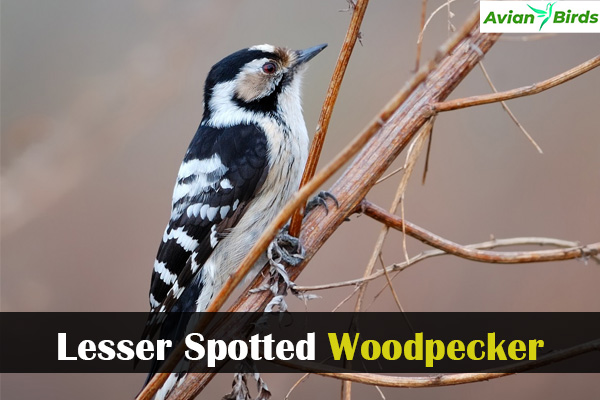
Their drumming sound is quieter and less intense than that of the Great Spotted Woodpecker.
There used to be many more Lesser Spotted Woodpeckers, but their population has dropped by 83% since 1970! This decline is due to the loss of mature woodlands, the removal of dead trees they rely on, and competition with the Great Spotted Woodpecker.
8. Lesser Redpoll
- Scientific Name: Acanthis cabaret
- Size: 11.5-12.5 cm
- Weight: 9-12 grams
- Lifespan: 2-6 years
- Diet: Seeds, small insects, and buds
The Lesser Redpoll is a small finch, just a bit bigger than a Blue Tit. Its body is streaky brown, and it has patches of red on its head and sometimes on its breast.
As you might expect, males have a larger and brighter red patch on their foreheads than females, though females still have some red, just less intense.
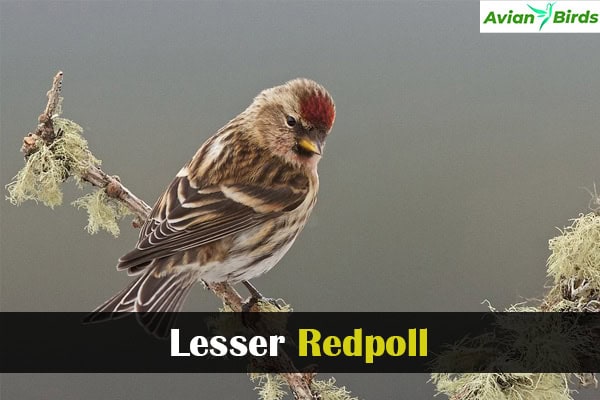
Although these birds are found in many places, their population has dropped significantly in recent decades. The main reasons are habitat loss and changes in farming practices. Because of this, they are now on the Red List of conservation concerns by the RSPB, meaning they need protection to help their numbers recover.
9. Common Redpoll
- Scientific Name: Acanthis flammea
- Size: 12-14 cm
- Weight: 12-16 grams
- Lifespan: 2-6 years
- Diet: Seeds, birch catkins, and small insects
The Common Redpoll Birds With Red Heads isn’t very common in the UK as a breeding bird, but it often visits during the winter. People sometimes confuse the Common Redpoll with the Lesser Redpoll.

Common Redpolls are larger than Lesser Redpolls. They are also paler but still have a noticeable red cap and some red on their breasts. Their feathers are streaky brown on top and whitish underneath. They also have black streaks on their bodies and usually show two white lines on their folded wings, making them easier to identify.
Conclusion
There are nine fascinating Birds With Red Heads that you can spot in different parts of the UK: the Black Grouse, Swallow, Pheasant, Goldfinch, European Green Woodpecker, Great Spotted Woodpecker, Lesser Spotted Woodpecker, Lesser Redpoll, and Common Redpoll.
If you’re hoping to find a specific bird, it’s important to know their seasonal movements. For instance, don’t expect to see Swallows in the winter—they’ll be soaking up the sun in Africa during that time!
Read More🐦Related Articles:
- Owls in Idaho
- Hummingbirds In Virginia
- Yellow-legged Gull (Larus michahellis)
- Florida Birds Of Prey
- How Long Do Chickens Live
- The Ultimate Guide to Storing Birdseed
Frequently Asked Questions
Q1. What British bird has a red head?
Several British birds have redheads, including the Goldfinch, Linnet, and Redpoll.
Q2. What is the bird with a red head called?
The Goldfinch and Redpoll are two common UK birds with red heads.
Q3. What bird has a red cap?
The Lesser Spotted Woodpecker and Great Spotted Woodpecker both have red caps.
Q4. What kind of bird has a red rump in the UK?
The Redstart is a UK bird known for its striking red rump.



